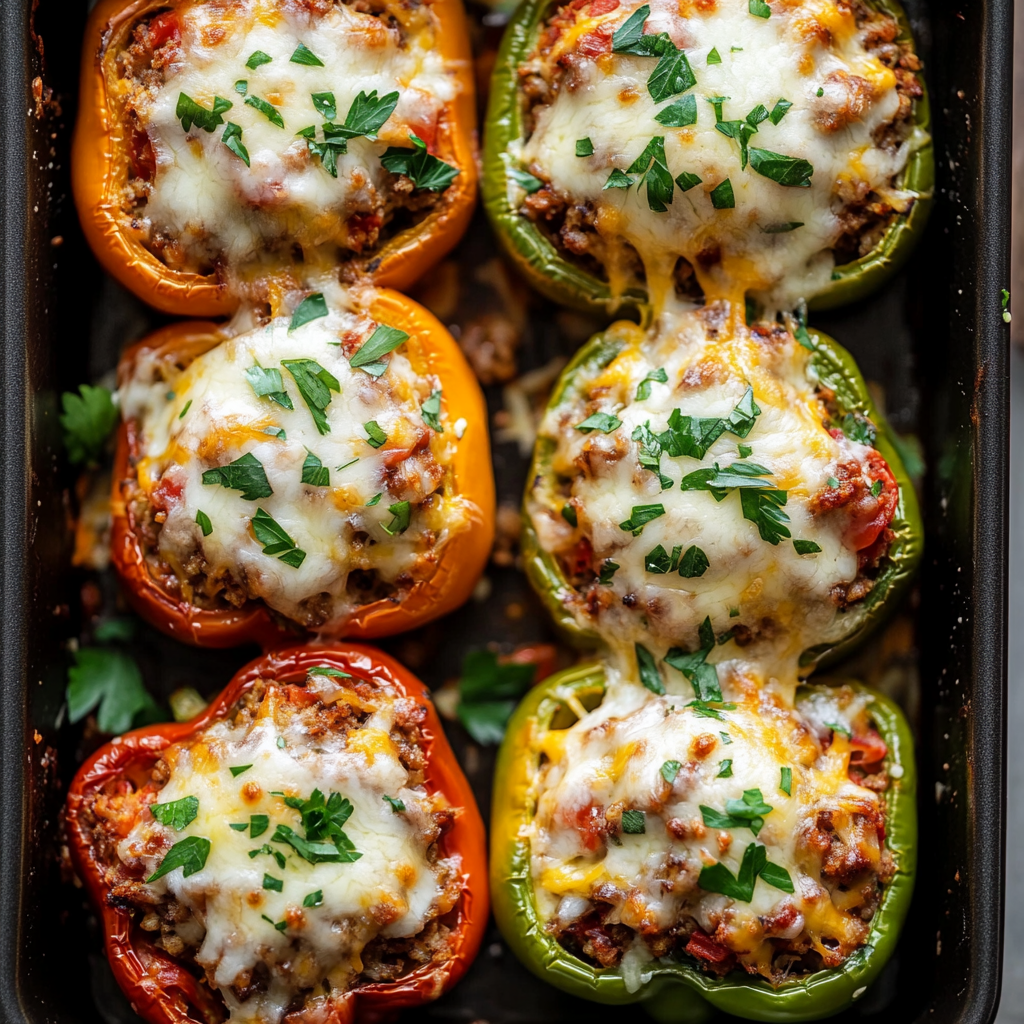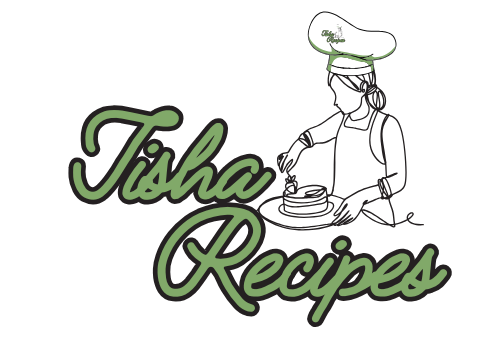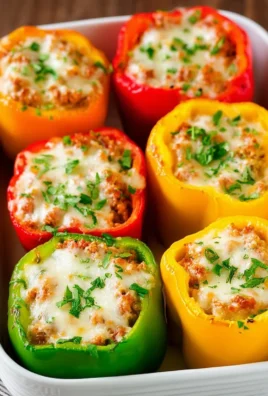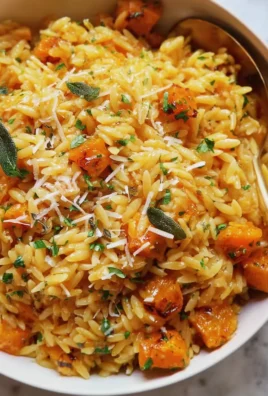
Stuffed bell peppers are a delightful, versatile dish that has captured the hearts of food lovers worldwide. Whether served as a hearty main course, a creative appetizer, or a visually striking side dish, stuffed peppers bring a perfect balance of flavor, texture, and nutrition. This guide will walk you through every detail of preparing stuffed bell peppers, ensuring success every time you make them.
The History and Appeal of Stuffed Bell Peppers
Stuffed bell peppers have a rich history, with roots in various cuisines around the globe. The concept of stuffing vegetables with flavorful fillings dates back centuries. Different cultures have embraced this culinary technique, using locally available ingredients to create unique versions of the dish.
In the Mediterranean region, stuffed peppers are a cornerstone of dishes like Greek gemista and Turkish dolma. These peppers are often filled with rice, herbs, and ground meat, then slow-cooked in a tomato-based sauce. Mexican cuisine features chiles rellenos, which are peppers stuffed with cheese or spiced meats, battered, and fried. In the United States, stuffed bell peppers have become a comfort food staple, frequently filled with ground beef, rice, and cheese, then baked to perfection.
What makes stuffed bell peppers so popular is their versatility. The filling can be adapted to suit any dietary preference, from meat lovers to vegans, and the dish is easy to prepare in advance, making it a convenient choice for weeknight dinners or special occasions.
Why Bell Peppers Are Perfect for Stuffing
Bell peppers are a natural choice for stuffing due to their sturdy structure, mild flavor, and vibrant colors. Their hollow interior and firm walls create the perfect vessel for holding a variety of fillings.
- Color Options: Bell peppers come in a range of colors, including red, yellow, orange, and green. While they all have a similar texture, each color offers a slightly different flavor. Red peppers are the sweetest, followed by yellow and orange, while green peppers are more herbaceous and slightly bitter.
- Nutritional Benefits: Bell peppers are a powerhouse of vitamins and antioxidants. They are rich in vitamin C, providing a boost to the immune system, and contain significant amounts of vitamin A, which supports eye and skin health.
- Flavor Compatibility: The mild, slightly sweet taste of bell peppers pairs beautifully with a wide variety of fillings, from savory meat and cheese to hearty grains and beans.
Selecting and Preparing Bell Peppers
How to Choose the Best Bell Peppers
For the best results, choose bell peppers that are:
- Firm and Glossy: The skin should be smooth and shiny, with no wrinkles or soft spots.
- Evenly Shaped: Select peppers that can stand upright on their own, as this makes stuffing and baking easier.
- Brightly Colored: Vibrant colors indicate freshness and sweetness.
Preparing Bell Peppers for Stuffing
- Wash Thoroughly: Rinse the peppers under cold water to remove any dirt or residue.
- Core and Remove Seeds: Use a sharp knife to slice off the tops of the peppers or cut them in half vertically. Scoop out the seeds and membranes with a spoon, ensuring the interior is clean and ready for filling.
- Pre-Cook (Optional): Par-cooking the peppers before stuffing helps them become tender during baking. This can be done by boiling them for 3–5 minutes or roasting them for 10–15 minutes.
Ingredients for Stuffed Bell Peppers
Stuffed bell peppers can be made with a wide variety of ingredients, allowing for endless creativity. Here are some common components:
The Peppers
- 4–6 medium-sized bell peppers (any color)
The Filling
- Protein: Ground beef, turkey, chicken, pork, or plant-based alternatives like lentils, tofu, or chickpeas.
- Grains: Cooked rice, quinoa, bulgur, or couscous for a hearty base.
- Vegetables: Diced onions, garlic, zucchini, spinach, tomatoes, and corn add flavor and texture.
- Cheese: Cheddar, mozzarella, Parmesan, or feta for creaminess and richness.
- Seasonings: Oregano, basil, paprika, cumin, salt, and pepper to enhance the flavor.
Toppings
- Additional shredded cheese for a melty finish.
- Fresh herbs like parsley or cilantro for garnish.
Preparation Tools
Having the right tools on hand makes the preparation process smooth and efficient:
- Sharp Knife: For precise cutting and coring of the peppers.
- Cutting Board: Provides a stable surface for chopping vegetables and slicing peppers.
- Large Skillet: Perfect for sautéing ingredients for the filling.
- Mixing Bowls: For combining the filling ingredients.
- Baking Dish: A 9×13-inch dish is ideal for arranging the stuffed peppers for baking.
- Aluminum Foil: To cover the peppers during baking, ensuring even cooking.
Step-by-Step Instructions
1. Prepare the Bell Peppers
- Slice and Clean: Cut the tops off the bell peppers (or slice them in half vertically, depending on your presentation preference). Remove seeds and membranes.
- Optional Par-Cooking: Place the peppers in a pot of boiling water for 3–5 minutes or roast them in the oven at 375°F for 10–15 minutes. This step softens the peppers slightly, ensuring they cook evenly during baking.
2. Prepare the Filling
- Cook the Protein: Heat a tablespoon of olive oil in a skillet over medium heat. Add ground meat or a plant-based protein and cook until browned. Drain any excess fat.
- Add Aromatics: Stir in diced onions and minced garlic. Cook until fragrant and softened.
- Incorporate Grains and Vegetables: Add cooked rice or quinoa, diced tomatoes, and additional vegetables to the skillet. Stir to combine.
- Season Generously: Add spices like oregano, basil, paprika, salt, and pepper. Taste and adjust seasoning as needed.
- Add Cheese (Optional): Mix in shredded cheese for a creamy texture.
3. Stuff the Bell Peppers
- Fill the Peppers: Spoon the prepared filling into each bell pepper, pressing gently to pack it in. Mound the filling slightly above the rim for a generous portion.
- Top with Cheese: Sprinkle shredded cheese over the top of each stuffed pepper for a melty, golden finish.
4. Bake the Peppers
- Arrange in a Baking Dish: Place the stuffed peppers upright in a baking dish. Add a small amount of water or broth to the dish to keep the peppers moist during baking.
- Cover and Bake: Cover the dish with aluminum foil and bake in a preheated oven at 375°F for 30 minutes.
- Uncover and Finish: Remove the foil and bake for an additional 10–15 minutes, or until the cheese is bubbly and golden.
Perfect Pairings, Nutritional Insights, and Common Mistakes for Stuffed Bell Peppers
Stuffed bell peppers are a complete meal on their own, but pairing them with complementary sides can elevate the dish to new heights. Additionally, understanding their nutritional benefits and avoiding common mistakes ensures a satisfying and nutritious culinary experience.
Perfect Pairings for Stuffed Bell Peppers
While stuffed bell peppers are filling, the right accompaniments can add variety and enhance the overall meal. Here are some ideal sides to pair with stuffed bell peppers:
1. Garlic Bread
A warm, crusty loaf of garlic bread adds a comforting element to stuffed peppers. The buttery, garlicky flavor complements the savory fillings perfectly.
Tip: Add a sprinkle of Parmesan cheese and parsley to the bread before toasting for an extra flavor boost.
2. Caesar Salad
The crispness of romaine lettuce, the tangy Caesar dressing, and the crunch of croutons provide a refreshing contrast to the hearty stuffed peppers.
Variation: Add grilled chicken or shrimp to the salad for extra protein.
3. Roasted Vegetables
A medley of roasted vegetables such as zucchini, carrots, asparagus, and cherry tomatoes enhances the dish’s nutritional value and brings a touch of caramelized sweetness.
Serving Idea: Toss the vegetables with olive oil, garlic, and fresh herbs before roasting for added depth of flavor.
4. Mashed Potatoes
Creamy mashed potatoes are a comforting side dish that pairs wonderfully with stuffed bell peppers. Their smooth texture complements the slightly crispy edges of baked peppers.
Pro Tip: Add roasted garlic or cream cheese to the potatoes for an indulgent twist.
5. Quinoa Salad
A light quinoa salad with cucumbers, cherry tomatoes, red onions, and a lemon vinaigrette is a fresh and nutritious accompaniment. The citrusy dressing balances the richness of the stuffed peppers.
Tip: Toss in crumbled feta or goat cheese for added creaminess.
6. Soup
A warm bowl of soup can serve as an appetizer or side dish.
- Tomato Basil Soup: Complements the flavors of stuffed peppers, especially if they contain marinara sauce.
- Minestrone Soup: Packed with vegetables and beans, it adds heartiness to the meal.
7. Cucumber and Dill Salad
This simple salad of thinly sliced cucumbers, fresh dill, and a tangy yogurt dressing is a refreshing palate cleanser.
Variation: Add radishes and red onions for extra crunch and color.
8. Grilled Corn on the Cob
Sweet, smoky, and slightly charred, grilled corn is a fantastic side dish for stuffed peppers.
Tip: Brush the corn with a mixture of butter, garlic, and paprika before grilling for a flavorful twist.
Nutritional Insights of Stuffed Bell Peppers
Stuffed bell peppers are not only delicious but also packed with nutrients. With the right ingredients, they can be a healthy addition to your diet.1. Bell Peppers as a Nutritional Powerhouse
- Rich in Vitamin C: A single red bell pepper contains more than 150% of the recommended daily intake of vitamin C, which supports immune health and collagen production.
- Low in Calories: Bell peppers are naturally low in calories, making them a great base for a filling yet low-calorie dish.
- High in Antioxidants: They are packed with carotenoids like beta-carotene and lutein, which promote eye health.
2. Protein and Fiber in the Filling
- Protein-Rich Fillings: Using ground beef, turkey, or plant-based alternatives like lentils provides essential amino acids for muscle repair and overall health.
- High Fiber Content: Vegetables, beans, and grains in the stuffing add fiber, aiding digestion and promoting a feeling of fullness.
3. Customizable for Dietary Needs
Stuffed bell peppers can be tailored to suit various dietary preferences:
- Low-Carb: Substitute rice or grains with cauliflower rice.
- Vegan: Use lentils, tofu, or beans as the primary protein, and skip the cheese or use a dairy-free alternative.
- Gluten-Free: Ensure breadcrumbs and other fillers are certified gluten-free.
Common Mistakes to Avoid
Even experienced cooks can face challenges when preparing stuffed bell peppers. Here are common pitfalls and how to avoid them:
Mistake 1: Using Unstable Peppers
Problem: The peppers tip over in the baking dish, causing the filling to spill out.
Solution:
- Choose peppers with flat bottoms or trim the bottom slightly to create a stable base.
- Arrange the peppers snugly in the baking dish to help them stay upright.
Mistake 2: Undercooked Peppers
Problem: The peppers remain too firm after baking, making them difficult to cut and eat.
Solution:
- Par-cook the peppers by boiling or roasting them before stuffing to soften them slightly.
- Increase the baking time if needed, covering the dish with foil to prevent drying.
Mistake 3: Bland Filling
Problem: The filling lacks flavor, resulting in a disappointing dish.
Solution:
- Season each layer of the filling generously with herbs, spices, and salt.
- Add flavorful ingredients like garlic, onions, fresh herbs, or grated Parmesan.
Mistake 4: Soggy Filling or Peppers
Problem: Excess moisture makes the dish watery.
Solution:
- Drain canned vegetables like tomatoes or beans before adding them to the filling.
- Avoid overcooking the peppers or adding too much liquid to the filling mixture.
Mistake 5: Overstuffing the Peppers
Problem: The filling overflows during baking, creating a mess.
Solution:
- Fill the peppers to just below the rim, allowing room for expansion as the ingredients cook.
Mistake 6: Burnt Toppings
Problem: The cheese or breadcrumbs on top burn before the peppers are fully cooked.
Solution:
- Cover the dish with aluminum foil for the first half of the baking time. Remove the foil during the last 10–15 minutes to brown the topping.
Mistake 7: Dry Stuffed Peppers
Problem: The filling or peppers become dry during baking.
Solution:
- Add a small amount of broth or water to the baking dish to create steam.
- Cover the dish with foil to retain moisture, removing it toward the end for browning.
Mistake 8: Unevenly Cooked Peppers and Filling
Problem: The filling is cooked, but the peppers remain raw, or vice versa.
Solution:
- Ensure all ingredients in the filling are pre-cooked, as the baking time may not be sufficient to cook raw meat or grains.
Tips, Storing, Reheating, and FAQs for Stuffed Bell Peppers
Stuffed bell peppers are a versatile and crowd-pleasing dish that can be tailored to suit any occasion or dietary preference. In this section, we’ll explore expert tips to enhance your stuffed peppers, methods for proper storage and reheating, and answers to frequently asked questions. Whether you’re preparing this dish ahead of time or managing leftovers, these strategies will ensure maximum flavor and quality.
Expert Tips for Making the Best Stuffed Bell Peppers
1. Optimize the Filling for Flavor and Texture
- Balance Protein, Grains, and Vegetables: Use a mix of protein, grains, and vegetables to create a filling that is hearty, nutritious, and well-balanced. For example, combine ground beef, cooked rice, and sautéed onions.
- Season Every Layer: Season the meat, grains, and vegetables individually to ensure that the filling is flavorful throughout. Don’t rely solely on the sauce to carry the dish.
- Incorporate Cheese for Creaminess: Mix shredded cheese into the filling for a creamy texture, and top the peppers with additional cheese for a golden crust.
2. Prepare the Peppers Properly
- Choose Even-Sized Peppers: Uniform sizes ensure consistent cooking and make the dish visually appealing.
- Par-Cook for Tenderness: Par-cooking the peppers (boiling or roasting) before stuffing can help them become tender during baking without overcooking the filling.
- Keep Them Stable: If a pepper doesn’t stand upright, trim the bottom slightly to create a flat base without cutting through the pepper.
3. Perfect the Sauce
- Go Homemade: A homemade tomato or marinara sauce can elevate the dish’s flavor. Use fresh tomatoes, garlic, and herbs for the best results.
- Don’t Over-Sauce: Add just enough sauce to keep the filling moist without overwhelming the flavors of the peppers.
4. Customize to Dietary Preferences
- Vegetarian or Vegan Options: Replace meat with lentils, quinoa, or plant-based proteins, and use vegan cheese or nutritional yeast for a dairy-free alternative.
- Low-Carb Alternatives: Substitute grains with cauliflower rice for a low-carb version.
- Gluten-Free Adjustments: Ensure that breadcrumbs, grains, or any processed ingredients are gluten-free.
5. Presentation and Serving Tips
- Garnish with Fresh Herbs: Sprinkle chopped parsley, basil, or cilantro on top of the baked peppers for a fresh and vibrant touch.
- Serve with a Side Sauce: Offer extra marinara, tzatziki, or a creamy yogurt-based sauce on the side to enhance the meal.
Storing Stuffed Bell Peppers
1. Storing in the Refrigerator
- Cool Completely: Allow the peppers to cool to room temperature before storing.
- Use Airtight Containers: Place the stuffed peppers in an airtight container to retain freshness and prevent the filling from drying out.
- Shelf Life: Refrigerated stuffed bell peppers can last for up to 4 days.
2. Freezing Stuffed Bell Peppers
Stuffed bell peppers freeze exceptionally well, making them a great option for meal prep or saving leftovers.
- Freeze Unbaked Peppers: Assemble the peppers and place them on a baking sheet. Freeze them until solid, then transfer them to a freezer-safe container or bag.
- Freeze Baked Peppers: Allow baked peppers to cool completely. Wrap each one individually in plastic wrap or foil, then store in a freezer-safe container.
- Shelf Life: Frozen stuffed peppers can last up to 3 months.
Tip: Label the container with the date and reheating instructions to simplify meal prep.
Reheating Stuffed Bell Peppers
1. Reheating in the Oven
- Preheat the oven to 375°F (190°C).
- Place the stuffed peppers in a baking dish and add a small amount of water or broth to the bottom to keep them moist.
- Cover the dish with foil to prevent the tops from drying out.
- Heat for 20–30 minutes, removing the foil during the last 10 minutes for a crispier top.
2. Reheating in the Microwave
- Place the stuffed pepper on a microwave-safe plate.
- Cover with a microwave-safe lid or damp paper towel to retain moisture.
- Heat on medium power in 1-minute intervals, checking for even heating.
3. Reheating from Frozen
- In the Oven: Bake frozen stuffed peppers at 375°F (190°C) for 50–60 minutes, covering with foil for the first half of the cooking time.
- In the Microwave: Defrost the stuffed peppers in the refrigerator overnight, then reheat as described above.
Frequently Asked Questions (FAQs)
1. Can I Make Stuffed Bell Peppers Ahead of Time?
Yes, stuffed bell peppers are perfect for meal prep. Assemble them up to 24 hours in advance, cover tightly with plastic wrap, and refrigerate. Bake just before serving for the best flavor and texture.
2. How Do I Prevent the Peppers from Becoming Too Soft?
- Par-cook the peppers briefly and avoid over-baking.
- Add a small amount of liquid to the baking dish to create steam, which softens the peppers without making them mushy.
3. Can I Use Other Types of Peppers?
Absolutely! Try poblano peppers for a smoky flavor or banana peppers for a milder taste. Larger chili peppers, such as Anaheim, can also work well.
4. What’s the Best Way to Keep the Filling Moist?
- Use a sauce (such as marinara or broth) to keep the filling moist.
- Incorporate ingredients like diced tomatoes, shredded cheese, or a splash of olive oil into the filling mixture.
5. Are Stuffed Bell Peppers Freezer-Friendly?
Yes, both baked and unbaked stuffed peppers can be frozen. Wrap them tightly to prevent freezer burn, and store them for up to 3 months.
6. Can I Make a Healthier Version?
- Use lean proteins such as ground turkey or chicken.
- Substitute white rice with brown rice, quinoa, or cauliflower rice.
- Add extra vegetables to the filling for more fiber and nutrients.
7. How Do I Prevent the Cheese from Burning?
Cover the peppers with foil for the first half of the baking time to protect the cheese. Remove the foil during the last 10–15 minutes to allow the cheese to brown and bubble.
8. What Should I Do with Leftover Filling?
Leftover filling can be used in various ways:
- Toss it with pasta for a quick meal.
- Use it as a filling for wraps or burritos.
- Serve it as a topping for baked potatoes.
Conclusion
Stuffed bell peppers are a classic, versatile dish that beautifully combines vibrant colors, hearty fillings, and nutritious ingredients. Whether you prefer a traditional combination of meat and rice, a vegetarian medley of grains and vegetables, or a low-carb twist with cauliflower rice, this dish can be tailored to suit any taste or dietary preference.




Leave a Comment